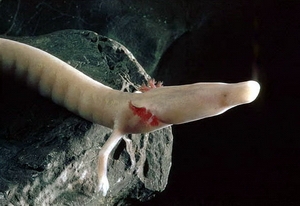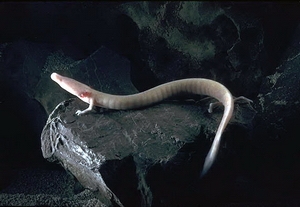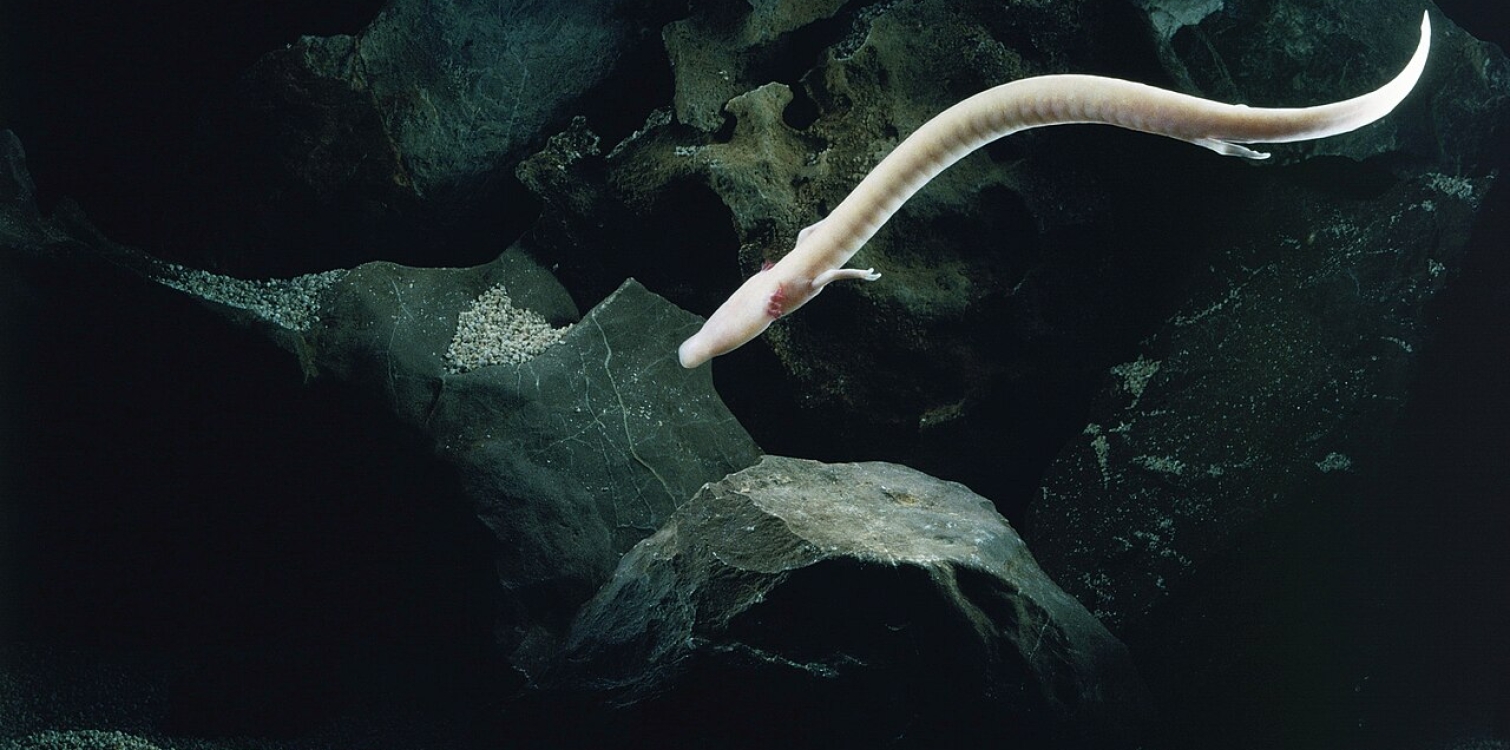
Source: Arne Hodalič, wikipedija
Olm (Proteus anguinus)
|
Size |
|
|
Weight |
|
|
Diet |
|
|
Habitat |
|
|
|
|
| Kingdom |
|
| Phylum |
|
| Class |
|
| Order |
|
| Family |
|
| Genus |
|
| Species |
|
Experts have named this species the olm.
Its eyes are shrivelled and covered with skin. It perceives what is happening by smell and vibrations detected by the senses in its skin. Its whole body is sensitive to light. It swims very quickly by curling its body, with the assistance of two pairs of small legs. The front legs have three toes each, while the back legs have two.
It may not look it, but an olm is a predator. It hunts cave-dwelling aquatic invertebrates, crayfish, and larvae. The olm is an amphibian, breathing through external gills and possessing simple lungs.
The male and female differ very little externally. After mating, the female lays eggs which she sticks on stones in underground river beds. Live larvae may also hatch instead of eggs.
The olm was first scientifically described and named in the 18th century. Almost a century earlier, it was described by Janez Vajkard Valvasor in Slava vojvodinje Kranjske (The Glory of the Dutchy of Carniola).

Source: Arne Hodalič, wikipedija

Source: Arne Hodalič, wikipedija
So there's only one place to find it - in the underground waters of the karst world of the Dinaric karst. It was first found and described in Slovenia. It lives in hundreds of caves and springs: the Postojna Cave, the Planina Cave, the Škocjanské Caves, the Mejame Cave, etc.
In Slovenia, the olm is protected and included on the Red List of Endangered Species.

